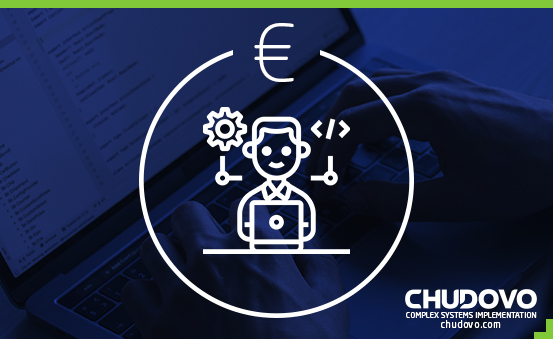How To Build MVP – 5 Main Tips + How much is it in 2023?
So, with MVP product development, you can create the most basic form of your new product using only a few resources and receive insightful feedback from early adopters to help you decide whether to continue developing the product.
Additionally, you’ll have a better sense of how much it will cost to turn your concept into a finished item that can be bought and sold on the open market.Startup failure rates were over 90% in 2020. And the most recent research by Euler Hermes is much less impressive. The data shows there will be 15% more global bankruptcies in 2022.
Because of a lack of demand from consumers, you cannot sell your product. When you have an exciting new idea, focus on what customers want and can use before adding unnecessary features or costs.
This is what informs how you create your MVP. MVP is a minimum viable product that helps test the product’s concept. It’s a prototype that can be used to collect feedback from users.
This article will explain the following:
What is a Minimum Viable Product?
The minimum viable product is the scaled-down version of your offering that you can use to gauge consumer interest. MVP can help you make better decisions about your product development and allow users or customers to try out your idea.
Although MVP typically only includes a tiny percentage of the features you ultimately desire in your product, it is sufficient to demonstrate your business hypothesis. A first draft is similar to an MVP. Before your product is formally introduced to the market, you can use it to get customer feedback.
Startups can test concepts with an MVP (minimum viable product) before investing significant funds and resources in coding and development. Without spending much money on development costs, this technique enables you to obtain insightful information on client behavior and demands.
Why Start From an MVP?
Why would you launch a product missing key features rather than offering your target users a complete and fully functional version from the start?
Startups and established brands may decide to develop an MVP because of the following:
Concept Validation
Concept validation is the primary driver for using an MVP as a starting point. A product that people want and need, not simply one that you believe they will use, is the aim of building an MVP. Build a prototype or mockup of your idea to test it out if you’re unsure of its practicality.
It can be challenging to determine whether your product will be helpful before testing the minimally viable version. By focusing only on the functional components of your business idea, you can evaluate its marketability.
By releasing an MVP, you may rapidly gather feedback on whether and how many potential customers will pay for your product.
Lower Prices
A product takes longer to build and costs more money to develop the more features it has. The best strategy to ensure fewer issues and a quicker time to market for your product is to select which features are most crucial, develop those first, and then add more functionality when resources allow.
By removing features that aren’t essential to your business model, developing an MVP can also help you save money on development expenditures.
Reduced Time to Market
Founders that successfully introduce their products after a succession of short tests. This enables them to launch their product more quickly and make significant adjustments in response to customer feedback.
The quicker you can get your product into the hands of early adopters, the more time you’ll have to make modifications and enhancements before it enters the general market. This is crucial if you’re working on a novel product for which there aren’t any well-established design or production best practices currently.
An MVP can assist you in breaking into a market early, gaining traction, and outpacing rivals.
Scalability
What features people need and want can’t be known with certainty. An MVP enables you to obtain user feedback early in development since people are frequently unaware of their problems.
Utilize this input to align your product better with the requirements and preferences of your users. An MVP also enables you to test market assumptions and ascertain the viability of your product.
Say, for illustration, that you are developing a new mobile app for social media influencers. To avoid having users continually update their accounts when traveling abroad, you might wish to incorporate a function that lets users plan posts. However, how many customers require this option?
You may do an MVP to determine if users will use this feature or if they’d rather have something else. You can choose better options for the direction of your MVP based on this feedback.
Early Promotion
A new product should be marketed by marketers as quickly as possible. Early-stage marketing can assist companies in attracting and interacting with early adopters, creating excitement for their ultimate development or service launch.
One of the essential factors in developing a successful MVP is marketing. If you don’t advertise your product right away, you run the danger of losing potential clients to rivals who are.
It’s crucial to think about how customers will interact with your product or service after they become aware of it when developing an MVP for your company.
Consider these issues when creating your MVP: Who will use this item? How do they plan to use it? What features ought to be included to make them want to use it?
This procedure can be crucial to a product launch’s success because it creates buzz and can increase brand recognition. Your chances of establishing a name in your industry or speciality are stronger the earlier you sell your goods.
Costs of MVP in 2023
Giving a precise figure for MVP costs is challenging because of the many variables involved. MVP expenditures can be between $20k and millions of dollars; typically, they average between $30k and $ 150k. The size and functionality of your app have the most significant impact on price.
What factors contribute to the cost of MVP?
A minimum viable product’s costs are divided into development and testing costs. The price of developing the app includes building it, whereas testing costs include user feedback surveys and usability testing.
Several factors influence MVP pricing. Below, we’ll explore those and how they impact the cost of building an MVP.
1. Scope of the project
The scope of your MVP defines the functionality you want in your final product. The features you incorporate into the design determine how long it will take to develop and which resources will be required for construction.
To make your product workable, you must include features that bring value to customers. But not all of the features can be core—you have to prioritize them, so you don’t spend too much time on unimportant ones.
An MVP is a product that has been reduced to its bare essentials. The goal of an MVP is not to be complete but rather to demonstrate what your core value looks like when all unnecessary bells and whistles are removed. Once you’re confident that your product is performing its core functions correctly, put it to the test on potential customers to see if they’d be willing to buy the finished product.
2. Development partner
You can build your MVP with one of three teams: in-house, remote, or specialized. We’ll go over each in detail below so you can decide which type is best for your company.
In-house team
Your in-house development team works for your company and is managed by you. In this case, the relationship is employer-employee rather than client-contractor, whereas when you hire a vendor to do the work, they become a contractor on your project.
One advantage of hiring in-house developers is that you know what they are capable of. Another advantage is the ability to make changes to your project as needed – but such advantages come with additional costs, such as insurance and sick leave.
In addition, you must personally manage product development and adjust the work of your development team.
Freelance developers
Freelance specialists charge less than full-time employees, but you’re taking a chance by hiring someone who isn’t well-known. It is preferable to work with high-quality, dependable freelancers.
A freelancer’s portfolio and references from previous clients are the best ways to understand their abilities. When hiring a freelance developer, it is critical to consider how many hours will be spent on development to calculate an hourly rate.
Specialized development firm
If you need to keep your MVP confidential, we recommend working with a company specializing in MVP development. Companies like these have deep expertise and can care for your specific needs.

Certified engineers
Convenient rates
Fast start
Profitable conditions
Agreement with
EU company
English and German
speaking engineers
Several companies assist clients in developing MVPs by advising them on which features are most essential and recommending the best development practices for their projects.
You can check reviews on Clutch, GoodFirms or Onbench to determine the level of expertise of a development company. You can also contact previous clients to learn about their experiences working with this company.
The costs of working with different development teams
When deciding between the three options presented above, you can estimate your MVP’s cost based on a specific developer’s hourly rates. The following factors will affect those rates:
- Technology Stack
- Hourly rate of development partner
- Fixed price contract
Technology stack
The cost of developing an MVP is determined by the technology stack selected by the development team. Because the specifics of your case determine the technology stack for your MVP, only a development partner can estimate total MVP pricing.
However, some general rules can assist you in evaluating the cost of your MVP. For example, if your product is a mobile app and you develop it with React Native or Swift for iOS, the cost of creating an MVP will be higher than if you use HTML5 and JavaScript.
The hourly rates of a development partner
Two major factors influence the hourly rate of a development partner for your project: location and expertise.
Location
The developers’ hourly rates will vary depending on the country because living standards differ. For example, a developer earning $50 per hour in Eastern Europe will earn the same as a developer making $250 per hour in the United States. As a result, service costs differ across regions.
Specialization and expertise
Expertise is another factor that influences developers’ hourly rates. Creating a custom solution will necessitate expertise in a specific niche, which will come at an additional cost.
Developers are classified into three groups based on their years of experience: junior (0-1 year), middle (1-3+ years), and senior (> 5 years).
A middle-level developer is a good choice in terms of quality and cost. However, each company may have a system to assess individual developers’ experience.
Type of contract
Fixed-price and time-and-materials contracts are the most common contracts to sign with your development partner. We’ll look at the benefits and drawbacks of each approach.
Fixed Price Contract
A fixed-price contract is used when the project’s requirements and specifications are precise and will not change.
When a client hires a development team, it is critical to specify exactly what work will be done and how much each task will cost. A good contract includes specific clauses that protect both parties. For example, if unforeseen issues arise during the project’s execution, provisions should be in place to help resolve them quickly and without additional charges or delays on either side.
Time and material contract: flexibility and paying for results
This is a time-based contract, which means you’re paying for actual hours worked at the developer’s average hourly rate.
This is a standard model because it allows for a greater scope of work flexibility than fixed-price contracts. A time and materials contract enables you to change requirements or features.
5 Main Tips for building an MVP
If done correctly, a minimum viable product (MVP) is an excellent approach to testing a concept. You don’t want to waste time or money on a useless endeavour by devoting weeks to it. Here are five ideas to help you create an MVP and launch your product more quickly
1. Be open to making errors.
It’s critical to remember that making errors and taking lessons from them is accepted. It doesn’t matter if you don’t want to make mistakes; they will still happen! So take a deep breath and realize that nothing will go as planned.
Making errors is the best approach to learning about your product and what clients need or want. If you never make a mistake, you won’t understand how your people use your product (or even if it is valuable). The more mistakes you make when developing MVPs in the beginning, the quicker you’ll improve at determining what functions (and what doesn’t).
2. Find the right people to help you.
Finding the right people to assist you is crucial while constructing your MVP. When looking for these kinds of employees (or contractors), look for people with experience in the field in which your startup is specialized. Look for someone with experience working in restaurants if your business sells software to the restaurant industry.
If at all feasible, look for mentors who are also in your field; they will have years of experience designing great products and know exactly how much time should be spent on something similar to yours.
3. Concentrate on a specific issue.
Focusing on a specific issue should be your initial step. Avoid attempting to solve too many issues at once and issues that aren’t actually issues or have previously been resolved. Your solution will only be helpful to people if it addresses real-world issues.
The following stage is to confirm that sufficient users care about the issue and value the solution highly enough to pay for it. This will make it more likely that your customers will be active users of your product.
4. Maintain simplicity.
Your MVP will be far more successful if you stick to these guidelines rather than trying to make it flawless the first time. The secret is to keep it straightforward and concentrate on your product’s essential features. As you attempt to create an MVP, keep in mind this maxim: Simple is best; limit your complexity and Try to avoid taking on too much.
5. Consider the overall picture.
Being able to respond to the question, “what is the goal of this product?” is crucial while developing a product. This is crucial because it enables you to concentrate on creating something that will meet the demands of your users and help you accomplish the objective you set for yourself.
After determining the answer to this query, you should consider how you will determine whether your MVP was a success. You need a system for monitoring progress to determine what needs to change and where improvements may be made depending on how well or poorly things are going.
Conclusion
We hope this post has given you some ideas for an MVP’s potential design and helped you consider creating one. Remember that sometimes it can be wise to start small with a basic version of your product and gauge consumer interest before investing more time or resources in creating anything significant.
Instead of fixing every problem, concentrate on one problem at a time when starting a successful MVP. Lastly, ensure that the people you hire for your team (internal or external) have the necessary skill set to succeed.
FAQ
What does MVP mean?
The minimal viable product (MVP) is an iteration of a new product that enables a team to obtain the most significant amount of verified customer learning with the least effort.
Why is the MVP so important?
The main benefit of developing an MVP is testing your business ideas. By offering the necessary features rather than a fully loaded, feature-heavy product, you can ensure that your product concept is appealing to your target market.
What does it cost to build an MVP?
Building a basic MVP ranges from $30,000 to $120,000. The type of product being produced, the number of features that will be included in the MVP, and whether the MVP is being built on an existing platform or from scratch are just a few of the variables that might affect an MVP’s cost in any given situation.
If you need highly qualified MVP developers at the right price for your project, contact us now!




